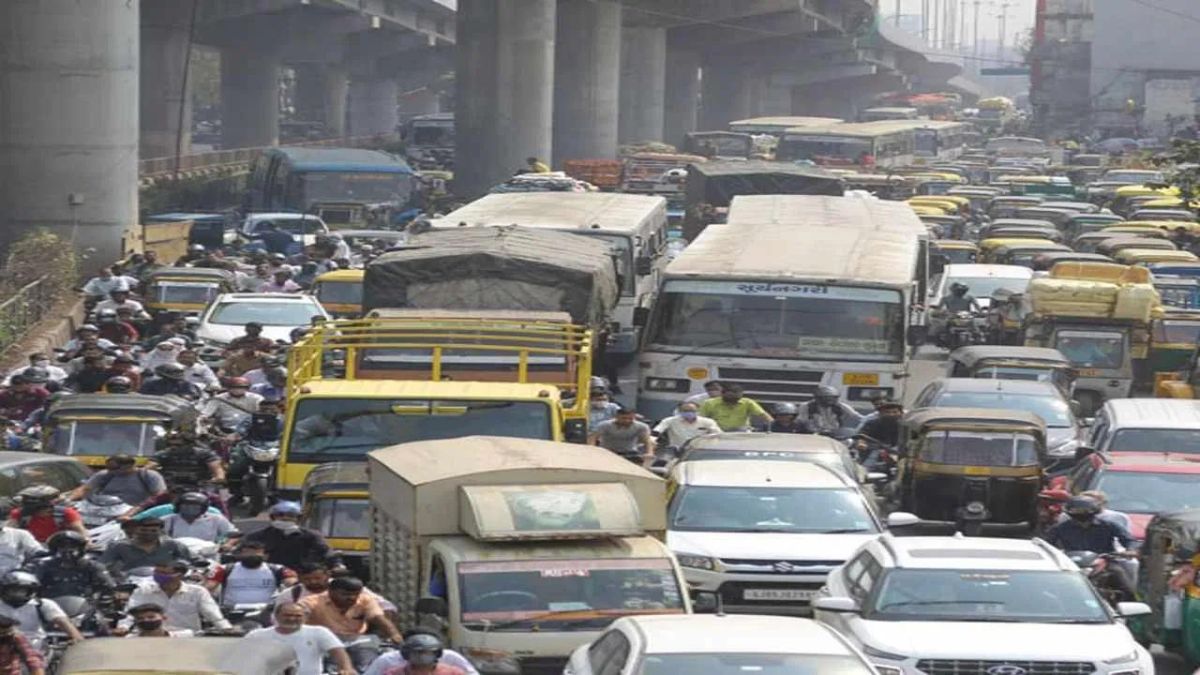Surat Traffic Woes: Residents Struggle Under New Signal System
While this new traffic management system promises to alleviate growing traffic problems in Surat, people face considerable hurdles

Advertisement
SURAT, GUJARAT : Surat’s diamond hub has just been placed in a figurative ‘Red’ zone, thanks to the combined efforts of the Surat Police and the Surat Municipal Corporation (SMC).
The authorities have strictly implemented the new traffic signal system throughout the city, with red and green lights at traffic intersections now operating. While this new traffic management system promises to alleviate Surat’s growing traffic problems, people face considerable hurdles, particularly in high-density traffic locations where lights are located fewer than 200 meters apart.
The biggest issue from residents is that the haphazard placement of these lights on short portions has resulted in longer travel times and more frequent traffic bottlenecks. As a result, travelers get caught in traffic, wasting time and fuel. For example, the journey from Vesu to Ram Chowk used to take 15 minutes but now takes more than 30. During peak hours, the journey can take 45 minutes or more.
Ashish Gujarati, President of the Pandesara Weaving Society, expressed his dissatisfaction, saying, “My factory is in Palsana, but I live in Vesu. There is only one signal on my route to the factory, which covers 80 percent of my journey. However, if I need to get somewhere else in the city, my journey time has doubled. It used to take 15 minutes to travel from Vesu to Ramchowk, but now it takes around 30 minutes.”
The longer journey time isn’t the only drawback. IDI Chairman Dinesh Navadia highlighted the new traffic system’s economic impact. “The traveling time has risen by 45 minutes. It used to take 15 minutes to get from Parvat Patiya to the Ring Road ICC building, but today it takes 25. Similarly, the travel from Katargam IDI to GJEPC office, which used to take 15 minutes, now takes 20-25 minutes. Fuel consumption has also risen by 15 to 20 percent,” he stated.
The new signal system will also have an impact on emergency services. Dr. Pratik Sawaj stated, “Obeying traffic signals is critical, but even without them, one can get to the hospital swiftly. With signals and gridlock on four roads, a lot of time is being wasted. The trip time has increased by 15 to 20%.
Commuters who take typical city routes are also affected. FOSTA Chairman Kailash Hakeem stated, “I live in City Light and have an office in the market on Ring Road.” It used to take 12 minutes to get to the textile market from home, but it now takes 20. Returning home takes even longer, particularly during peak hours, stretching the journey to more than 30 minutes. This has also resulted in a 20 to 25 percent rise in fuel usage, increasing my diesel bills by 5,000 rupees per month.
While the ideas underlying the new traffic management system are admirable, its implementation deserves careful rethinking. Strategic signal placement and timing, as well as real-time traffic control technology, could help to ease current concerns.
Advertisement

